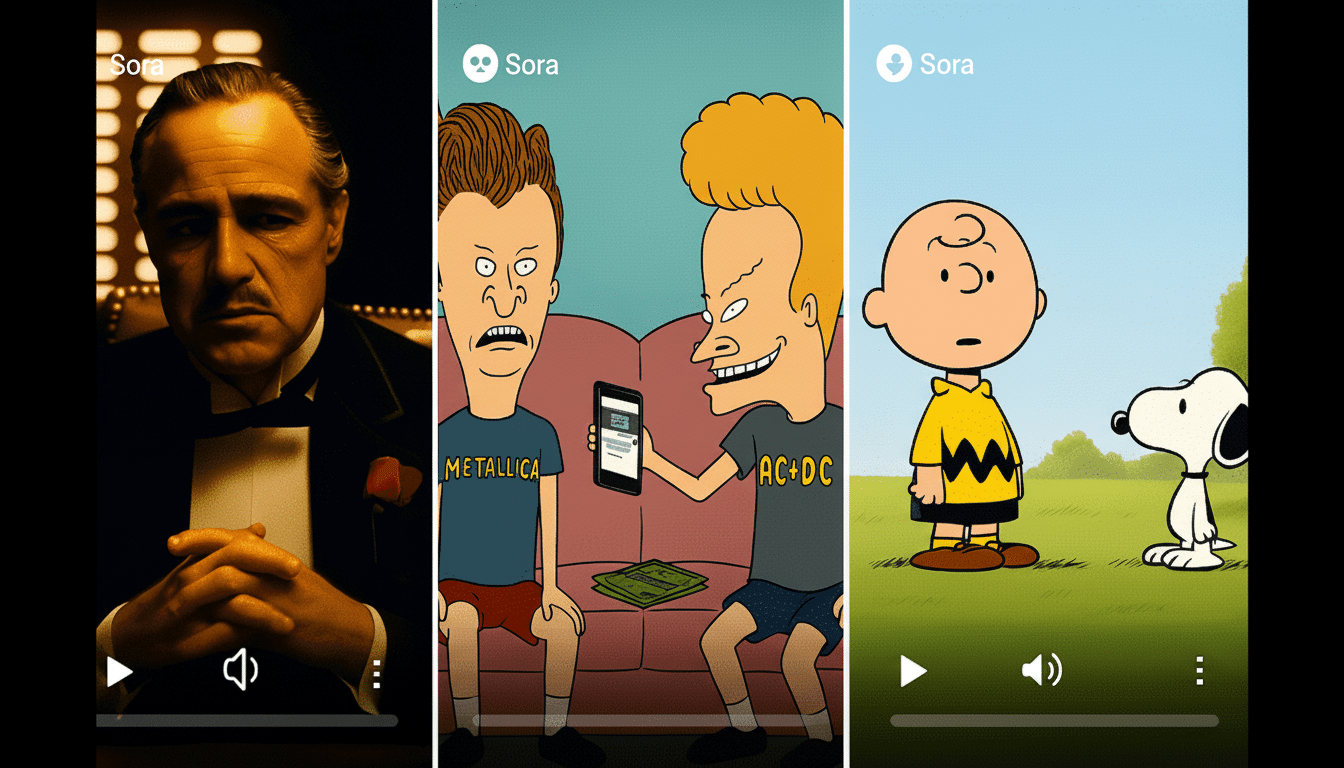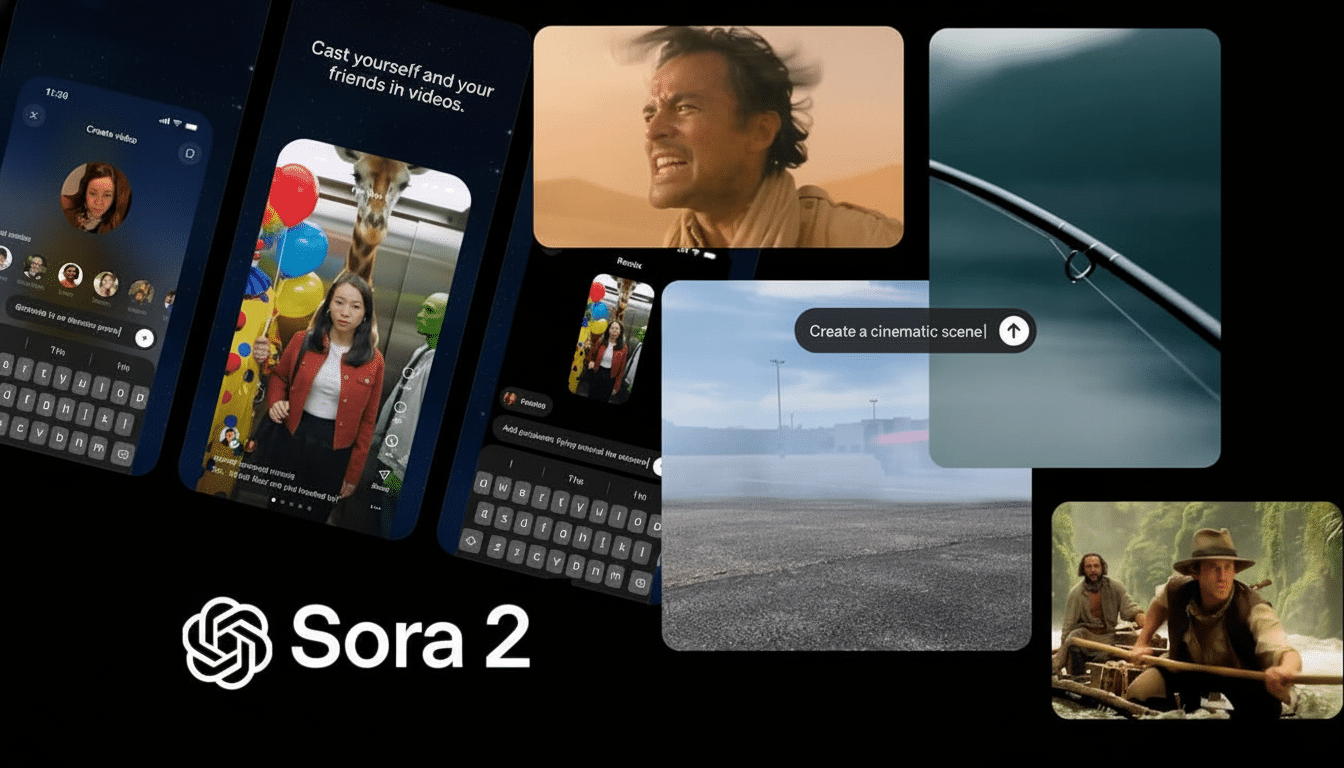OpenAI’s Sora 2 brings studio-quality video generation to your laptop, turning text prompts into cinematic scenes with believable lighting, physics, and stunt work. The only question here is not whether the clips look real. What matters is what this power means for your rights, the creative process itself, and your exposure to legal risk.
For artists, brands, and institutions, Sora 2 is a new camera and a new copier. It can help you dream faster — and it also can impersonate faster. It is that duality that has made the debate shift from novelty to necessity.
- What Sora 2 Actually Changes in Video Creation Workflows
- Who Owns AI Video And Who Is Responsible
- The Litigation and Policy Landscape Shaping AI Video
- Creativity After Sora: Evolving Skills and Opportunities
- Real Guardrails for Creators and Teams Using AI Video
- The Bottom Line on Sora 2, Rights, Risk, and Craft

What Sora 2 Actually Changes in Video Creation Workflows
Sora 2, now, mainstreams it: Multi-shot sequences, coherent subjects, and lifelike motion and convincing lip-sync, bundled into a consumer workflow. Cheap, high-definition video collapses barriers that formerly involved a crew, sets, and weeks of post-production.
That leap has consequences. Now those very same features that delight creatives — style transfer, likeness fidelity, and “remix” prompts — are called out for violating trademarks, threatening brands and public figures. When imitation is trivial, enforcement is strategic and not reactive.
Who Owns AI Video And Who Is Responsible
The US Copyright Office has been clear: copyright is for human-authored creative work. System-created works are unregistrable; human-authored works that incorporate AI elements can be protected to the degree of the human contributions. This principle was affirmed by a federal court in the context of an AI-only image, holding that machines are not authors.
That might mean your claim to a Sora 2 video depends on what you did, beyond typing a prompt — whether you storyboarded it and edited it, whether you composited in textures or rotoscoped footage, or made other creative choices that rise to the level of human authorship.
Reveal AI use when you register; ask only for human elements to be protected.
Liability is a different lane. Platform terms frequently give you wide rights to use the outputs but also push responsibility onto you. If your video violates a copyrighted character, infringes on a trademark, or misappropriates someone’s likeness, you — not the model — are where demand letters will land. These right of publicity laws, which are enforced by the states and tested in entertainment disputes frequently, bring one more source of legal peril when real people appear without consent.

The Litigation and Policy Landscape Shaping AI Video
Three legal fronts are beginning to take shape. First, training-data controversies: Publishers, visual artists, and photo agencies have sued leading AI companies for using copyrighted works to train models. Lower courts have not yet resolved whether mass scraping constitutes fair use; some claims have been permitted to proceed while others were narrowed. Expect years of precedent-setting decisions.
Second, output infringement: Industry groups such as the Motion Picture Association have called for stronger guardrails to prevent unauthorized generation of protected characters and franchises. Even with filters in place, edge cases and workarounds remain as an invitation for takedowns and claims for damages.
Third, misleading media: Regulators including the Federal Trade Commission have warned that AI-powered endorsements, impersonations, and manipulated political content could violate advertising and consumer protection laws. Sensity AI has found that nonconsensual deepfakes, on their own, account for the majority of videos detected, a reminder of how rapidly harm can scale when tools move beyond controlled environments.
In the EU, the AI Act makes transparency around AI-created content and training-data digests for high-stakes models mandatory, while coalition C2PA (with backing from Adobe, the BBC, Microsoft, and more) is pushing ‘content credentials’ that cryptographically record their provenance. None of these measures is foolproof, but together they increase the price of deception and make audits more feasible.
Creativity After Sora: Evolving Skills and Opportunities
Is art dead? History argues the opposite. And any great leap in our tools shifts where craft exists — from the paint tube to the camera to Photoshop. With Sora 2, the scarce skills move from operating gear to directing taste: prompt writing, iterative refinement, visual literacy, and narrative judgment. Those who can write ideas (not just image captions) wield more power.
The economic shock is real. Some of the commercial work that financed creative careers — stock footage, simple product shots, speedy social edits — will be automated. But studios and agencies are already shifting creative talent to previsualization, rapid concepting, and higher-touch storytelling that AI-only approaches can’t produce. The market will reward unique voices, owned styles, and access to exclusive data or communities.
Real Guardrails for Creators and Teams Using AI Video
- Use consent pipelines. Obtain written releases for any real person’s likeness or voice. Treat synthetic doubles as you would body doubles — contracts, scope limits, approvals.
- Whitelist inputs and outputs. Do not use prompts that reference characters protected by trademark, logos, or unique visual identities. Employ brand-safety checklists before publishing.
- Document authorship. Save version histories, prompt logs, and edit choices. These history files substantiate copyright claims on human contributions and facilitate resolution of disputes.
- Adopt provenance tech. Turn on content credentials using C2PA-supported tools and reveal AI assistance in credits. Client and platform trust is enhanced by being transparent.
- Update contracts and insurance. Throw in warranties on originality, training-data sources, and likeness rights; consider media liability coverage tailored to AI risks.
The Bottom Line on Sora 2, Rights, Risk, and Craft
Sora 2 isn’t so much about killing art as it is collapsing production time, raising the stakes for judgment. Rights involve human authorship, risk involves consent and compliance, edge depends on taste. Coddle the model as you would a powerful camera: you do not change the law, or the audience, or your own reputation when it comes to where and why you aim it.

